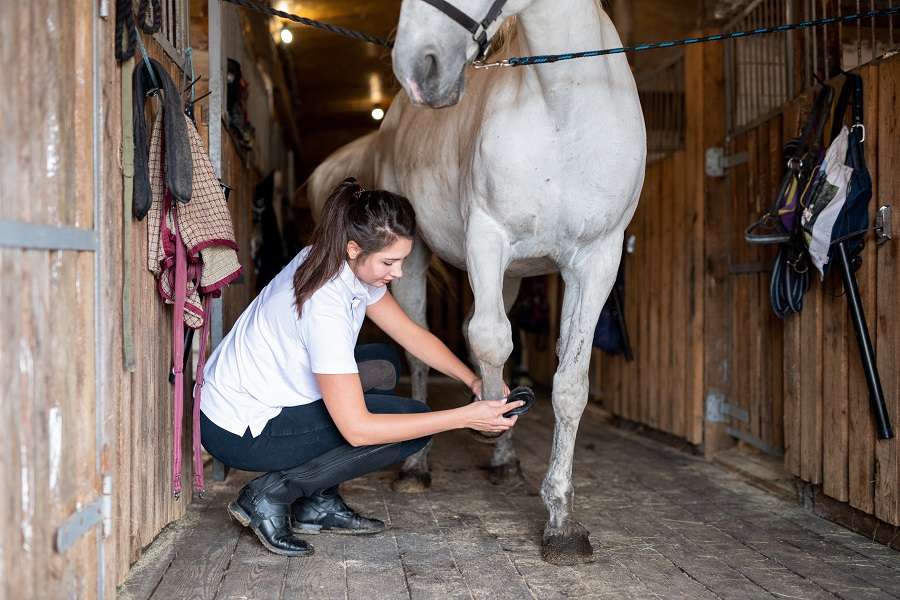
Laminitis is a painful disease that affects the hoofs of the horse. In medical terms, it is inflammation of the laminae (the soft tissues that attach the pedal or coffin bone to the hoof wall), which causes instability in the coffin bone and extreme pain.
Laminitis is a crippling condition that can lead to permanent structural changes in the foot of the horse. The pedal bone rotates downwards and, in some cases, punctures the sole. It can even lead to fatality in severe cases. As it is not a curable condition, prevention is necessary.
Researchers are racking their brains day in, day out to unearth the actual cause of laminitis. Some common causes of laminitis include inaccessibility to rich pastures or digestive upset (grass-founder), concussion on the hoof (road-founder), or weight distribution problems due to a previous injury.

The only way to deal with the disease is early detection and quick management. Unfortunately, only 45% of owners manage to identify this disease in their horses. In the majority of cases, it remains undiagnosed, and hence, untreated.
If you keep a watchful eye on your horse, you may be able to detect the presence of this debilitating disease. Here are the ten subtle signs of laminitis in your horse:
Sign #1: A hot hoof for a long duration
The temperature of the hoof rises due to a large influx of blood into the feet. However, if the feet cool down after a couple of hours, then there’s nothing to worry about. If your horse’s hoof stays hot for a very long duration, it is a sign of laminitis.
The rise in the temperature could be due to the hoof’s natural response to the disease in the laminae. In many cases, this temperature rise is followed by lameness that starts to show within 8 to 12 hours.
Keep checking the temperature of the hooves with your finger. You can also use an infrared surface temperature gauge for the same.
Sign #2: Bounding digital pulse
The digital artery runs in the lower limb through the groove between the suspensory ligament and flexor tendon and progresses down the posterior of the fetlock. Hold it gently to feel the pulse of your horse. In normal conditions, you may feel a faint pulse or absolutely nothing. But, if you feel a strong pulse, it is a warning sign. It is referred to as the bounding pulse.
If you feel a bounding pulse in both feet, it is due to laminitis. However, a strong digital pulse also indicates other types of foot pain. You should know how to differentiate between a bounding pulse and a strong pulse.

Sign #3: An increased heart rate
Heart rate is a very potent indicator of laminitis. In normal horses, 30 to 40 beats per minute is the resting heart rate, but in laminitis, the heart rate tends to rise before the horse goes lame.
Check the heart rate of your horse. If the heart rate has increased by six bpm (beats per minute) or more, take it as the onset of laminitis. Use a stethoscope or feel the pulse at the pastern or beneath the jaw. However, keep in mind that ambient temperature, excitement, and exercise also increase the heart rate.

Sign #4: Unusual rings or distorted hoof
In healthy hooves, the growth in the front (dorsal) part is faster as compared to the growth in the quarters. But laminitis hinders the normal growth pattern. In laminitis, the pace of growth at the heels surpasses the pace of growth at the toes. As a result, the growth rings are wider at the heels and narrower at the toes, creating an abnormal pattern on the surface of the hoof wall. It leads to lameness in the future.
Keep checking the shape of the hooves of your horse to identify the onset of laminitis.
Sign #5: Abnormal foot lifting
A horse shifts his weight between his feet about two to three times every minute. If you notice a deviation in this normal pattern, that is, if the frequency of weight shifting increases to three to five times per minute, it is an early sign of laminitis.
Also, observe any change in his stance to identify laminitis. A horse begins to shift his weight back to the haunches and stretch his legs out to relieve pain. It is the classic laminitis pose.
Sign #6: A short stride
After the onset of laminitis, a horse begins to shorten his stride before beginning to limp. Take your horse for a walk and observe his stride on hard surfaces. If the stride length is shorter, it indicates laminitis.
Sign #7: Reluctance in turning
If your horse walks easily in straight lines but shows reluctance in taking turns, it’s a warning sign. Laminitic horses find it very difficult to move in circles or turns and show lameness while turning.
Sign #8: Stretched or bleeding laminae
When the laminae begin to stretch, they start separating from the hoof wall. It becomes evident with a gap along the white line where the hoof wall meets the sole. The widening of this line is called “seedy toe”.
Also, if there are blood spots along the white line, it indicates hemorrhages, a sign of laminitis.

Sign #9: Increased insulin level
The normal insulin level in a horse should be 20 units or lower. If it is more than 40, take immediate measures to bring it down to the normal range before your horse gets laminitis.
Insulin activates IGF-1, a growth factor in the laminae, which causes them to grow. Hence, it’s important to keep the insulin level in check.
Sign #10: Inflammatory response
A systemic inflammatory response can cause laminitis. Inflammatory response leads to enzyme reaction in the feet that leads to the destruction of laminae.
Hence, if your horse is suffering from high fever or has an infection or diarrhea, laminitis could be the next. The best way to deal with it is by packing your horse’s feet in ice. Do this before the clinical signs of laminitis begin to show to prevent the destruction.
Summing it up
Laminitis doesn’t happen overnight. It starts at a microscopic level and gradually proceeds until lameness kicks in. If you are alert and watch out for these signs, you can identify laminitis in its early stage and prevent irreversible ailment.

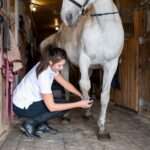

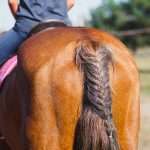

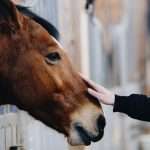
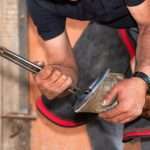

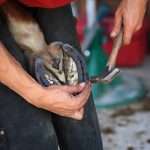


Thanks for the great article!